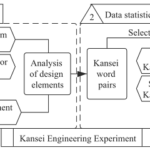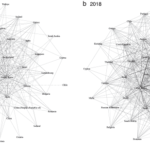Are you facing a complex problem when executing innovation projects? Are you looking for an innovative way to improve your product or service? The TRIZ methodology (Theory of Inventive Problem Solving) may be the solution you need.
A weakness of the current state of process improvement is primarily problem-solving through tools such as “brainstorming,” which leads to non-ideal resolutions of problems in the process (Sojka and Lepšík, 2020). In this context, the Theory of Inventive Problem Solving is presented as the most suitable alternative.
The Theory for Solving Inventive Problems is a set of tools and principles that help you think creatively and solve problems systematically. It is based on the analysis of millions of patents to identify patterns and common solutions to different technical problems.
In this article, we present information about TRIZ, its use, tools, and some examples, that can help implement this tool to manage your innovation portfolio.
What is TRIZ?
TRIZ is the Russian acronym for “Teoriya Resheniya Izobretatelskikh Zadatch,” which translates to “Theory of Inventive Problem Solving” in English, while in Spanish it is translated as “Teoría para Resolver Problemas de Inventiva”.
The Theory of Inventive Problem Solving is an international system of creativity developed in the former USSR between 1946 and 1985 by the engineer and scientist Genrich S. Altshuller and his colleagues.
According to Oxford Creativity, TRIZ is a systematic approach to understanding and solving any problem, and a catalyst for innovation and invention. The cornerstone of the Theory for Solving Inventive Problems is the realization of contradictions that can be methodically resolved through the application of innovative solutions (Terninko et al., 1998).
Ilevbare et al. (2023) highlight that TRIZ provides a structure for thinking and generating ideas when used in a group, leading to more effective teamwork. It is important to note that TRIZ is not a theory but a large set of tools that are simple and easy to learn and apply immediately to problems, and it is based on the idea that inventiveness and creativity can be learned.
The Theory for Solving Inventive Problems allows identifying and encoding the principles of creativity and uses them to make the creative process more predictable.
What benefits does TRIZ bring?
TRIZ can help you:
- Save time and money: By finding solutions faster and more effectively, you can save time and money in your business.
- Improve the quality of your products and services: TRIZ helps you develop more innovative and higher-quality products and services.
- Be more competitive: In an increasingly competitive market, innovation is key to differentiating yourself from the competition.
- Increase your creativity: TRIZ helps you develop your ability to think creatively and solve problems innovatively.
Use of the Theory for Solving Inventive Problems
According to Ladewig (2008), TRIZ is a methodology that provides product and process designers with a tool to solve inventive problems, which not only accelerates the design process but also helps achieve world-class performance.
Years of Russian patent research discovered that there are 100 known solutions to fundamental problems available in three TRIZ solution lists and the effects database. Terninko et al. (1998) describe that the premises on which TRIZ is based are:
- The ideal design is a goal,
- Contradictions help solve problems, and
- The innovative process can be systematically structured.
The Theory for Solving Inventive Problems (TRIZ) has 40 inventive principles and 76 standard solutions that can be used to solve problems.
The 40 principles include: segmentation, extraction, asymmetry, combination, universality, the complete list and their respective explanations can be found on the Technical Innovation Center website.
As for standard solutions, they can be grouped into five categories:
- 13 standard solutions for “improving the system” with little or no change.
- 23 standard solutions for “improving the system” by changing the system.
- 6 standard solutions for “transition systems”.
- 17 standard solutions for “detection and measurement”.
- 17 standard solutions for “simplification and improvement”.
Key tools of TRIZ
The Theory for Solving Inventive Problems is a versatile group of tools and methods for innovation and can be combined with many other different tools (Sojka and Lepšík, 2020). The Theory for Solving Inventive Problems is based on two fundamental concepts: generalizing problems and solutions, and eliminating contradictions.
Generalization of problems and solutions
Using TRIZ consists of learning repetitive problem and solution patterns, understanding the contradictions present in a situation, and developing new methods for scientific use.
- Problems and solutions are repeated in all industries and sciences. By representing a problem as a “contradiction,” you can predict creative solutions to that problem.
- Patterns of technical evolution tend to repeat in all sciences and industries.
- Creative innovations often use scientific effects outside the field in which they were developed.
Eliminating contradictions
In many cases, a reliable way to solve a problem is to eliminate contradictions.
TRIZ recognizes two categories of contradictions:
Technical contradictions
These are classical engineering “trade-offs,” where the desired state cannot be achieved because something else in the system prevents it. In other words, when something improves, something else automatically worsens.
For example: a product must be strong (good), but the weight will increase (bad).
Physical (or “inherent”) contradictions
These are situations in which an object or system suffers contradictory, opposite requirements.
For example: an umbrella must be large to protect you from the rain, but small enough to maneuver in a crowd.
Applications of the use of the Theory for Solving Inventive Problems
According to the Altshuller Institute for TRIZ Studies, TRIZ has been used by companies such as Ford, General Motors, LG Electronics, Intel, among others. Recently, Munje et al. (2023) reported the use of the Theory for Solving Inventive Problems together with additive manufacturing (3D printing) to develop new products.
On the other hand, Pacheco et al. (2019) reported the use of the Theory for Solving Inventive Problems in Sustainable Product-Service Systems, and mapped the synergies between TRIZ and sustainable strategies of Clean Production; while Russo and Spreafico (2020) employed TRIZ to develop a set of ecological guidelines to support designers in the development of new, more environmentally friendly products and processes.
On the Oxford Creativity website, you can download a series of case studies on the use of the Theory for Solving Inventive Problems. Likewise, the Theory for Solving Inventive Problems can help you:
- Develop new products and services.
- Improve existing products and services.
- Solve complex technical problems.
- Increase your creativity and inventiveness.
TRIZ can be applied in any area where innovative solutions are needed, such as:
- Engineering: Product design, process development, quality improvement.
- Business: Strategy, marketing, new product development.
- Science: Research and development, solving complex problems.
- Education: Fostering creativity, teaching problem-solving.
Examples of TRIZ applications
TRIZ has been used to solve a wide range of problems, such as:
- Designing a new type of aircraft: Molina et al. (2014) used TRIZ to improve acoustic comfort in airplanes and designed a noise filtration system aimed at eliminating the influence of unwanted noise on communication between people.
- Development of medical devices: Dathe (2015) developed a TRIZ procedure for technical innovations in medical devices.
- Improving the manufacturing process of a product: Li et al. (2017) proposed an integrated process focused on process and technological product innovations to solve key problems with the approach to the theory of inventive problem-solving based on process trimming.
The TRIZ methodology
The Theory for Solving Inventive Problems is based on the idea that innovation is not a random process but a science. The system provides a structured framework for addressing technical problems creatively and efficiently. The TRIZ methodology consists of three fundamental pillars:
- Situation analysis: The first step is to clearly define the problem to be solved, identify the technical contradictions involved, and understand the system conditions.
- Solution search: TRIZ offers a wide range of tools for generating innovative ideas. The TRIZ Matrix, the 76 standard solutions, and the system evolution principles are some of the most powerful resources the system offers.
- Solution implementation: Once a viable solution has been selected, it is necessary to translate it into a concrete design and put it into practice.
How to conduct a TRIZ workshop?
Organizing a workshop to apply the Theory for Solving Inventive Problems is similar to using other tools, so we will not describe initial organization aspects, we will go straight to the session. On the other hand, Da Silva et al. (2020) used TRIZ and Design Thinking as complementary tools for product development.
In summary, the methodology is based on organizing work groups of 4 to 7 participants, either in established or mixed groups.
The sequence of steps, 10 minutes each, is as follows:
- Introduce the problem to be solved. The facilitator presents the idea of TRIZ and identifies an undesired outcome (problem). Each group can use the “brainstorming” tool and choose the least desired outcome.
- Once the problem is defined, evaluate if it is a physical or technical contradiction.
- Find the generalized problem of TRIZ that matches your problem. Since problems often repeat in all industries and sciences.
- Find the generalized solution to solve the generalized problem.
- Use the identified solution to solve your problem.

On the other hand, Ladewig (2008) presents the following techniques:
Technique 1: Formulate the contradiction
A contradiction occurs when an improvement in one part of a product or system fundamentally causes deterioration in another part. Borgianni et al. (2021) indicate that the reliability of the Contradiction Matrix is often questioned, and there is far from reaching an agreement on a solid and reliable procedure for selecting inventive principles; likewise, Lu et al. (2022) provide a detailed example of the use of the contradiction matrix for product development.
To formulate a contradiction you must:
- Establish the main function of the system.
- Transform the problem into a contradiction statement by defining the effectiveness of reducing the primary functions.
- Help solve the contradiction, intensified by the extremes of the conflict.
- To better visualize the contradiction and encourage creative problem-solving, draw the conflict zone.
Technique 2: Formulate the ideal result
The ultimate ideal result is a technique that takes us out of the psychological inertia of our way of thinking or doing things. The important thing is that the ultimate ideal result frees us from the physical ways of achieving our goal by defining the desired final state.
The concepts of ideal machine and ideal final result can be used together to eliminate a contradiction.
Technique 3: TRIZ Matrix or Invention Matrix
Altschuller refers to the distinctive properties of objects, or of the subsystems that make up a technological system, as their attributes. He discovered that, despite the immense variety of technological systems, any technological system could be fully defined with just 39 attributes, such as strength, weight, reliability, and complexity.
The TRIZ matrix is based on the idea that a contradiction could be defined in an “invention matrix,” consisting of improved attributes (Y-axis) versus deteriorated attributes (X-axis).
After defining inherently occurring conflicts, such as improving strength (Y-axis, attribute 14) versus increasing and worsening weight (X-axis, attributes 1 or 2) or improving productivity (Y-axis, attribute 39) versus deterioration of accuracy (X-axis, attribute 29).
Algorithm of Inventive Problem Solving – ARIZ
The Algorithm of Inventive Problem Solving (ARIZ) is a process for finding an inventive solution, and according to Ekmekci et al. (2019) has the following characteristics:
- It is a process for formulating a solution to a given problem.
- It is a logical process that can be disciplined.
- It permanently provides the reinterpretation of the problem.
- It is the main tool used to solve TRIZ contradictions.
The ARIZ process has 9 stages based on three main groups:
a. Restructuring the original problem
System/problem analysis.
Resource/model analysis/ problem.
Describing the physical contradictions and the ideal final result.
b. Elimination of physical conflicts
Separation of physical conflicts, mobilization, and utilization of resources.
Use information from the database: impacts, standards, and principles.
Replace or reformulate the “micro-problem.”
c. Solution analysis
Re-evaluate the solution and the method analysis to eliminate the physical contradiction.
Improve the maximum utilization of the solution.
Re-evaluate all stages of the solution in practice in real-time.
Resources to learn more about TRIZ
Official TRIZ website: https://www.triz.org/
Oxford Creativity: https://www.triz.co.uk/
Conclusion
The Theory for Solving Inventive Problems is a working methodology that can aid in creative and inventive processes in your company; tools such as the TRIZ matrix are processes that can help you solve contradictions (problems) more simply.
It is important to note that TRIZ is a set of tools and as such you must choose the one that best suits your needs and the environment of your company to have an innovation portfolio. In addition, the Theory for Solving Inventive Problems is not a magic tool. It is a powerful tool that can help you solve problems creatively and efficiently. However, it is not an instant solution to all problems. Effort and creativity are needed to apply TRIZ effectively.
References
Borgianni, Y., Fiorineschi, L., Frillici, F. S., & Rotini, F. (2021). The process for individuating TRIZ Inventive Principles: deterministic, stochastic or domain-oriented?. Design Science, 7, e12.
Da Silva, R. H., Kaminski, P. C., & Armellini, F. (2020). Improving new product development innovation effectiveness by using problem solving tools during the conceptual development phase: Integrating Design Thinking and TRIZ. Creativity and Innovation Management, 29(4), 685-700.
Dathe, R. (2015). Process and efficacy of applying the TRIZ methodology to medical device innovations (Doctoral dissertation, University of Gloucestershire).
Ekmekci Ismail and Emine Elif. 2019. Triz Methodology and Applications. Procedia Computer Science 158: 303 – 315
Ilevbare, I. M., Probert, D., & Phaal, R. (2013). A review of TRIZ, and its benefits and challenges in practice. Technovation, 33(2-3), 30-37.
Ladewig, Gunter. (2008). TRIZ: The theory of inventive problem solving. 10.1002/9780470209943.ch1.
Li, M., Ming, X., Zheng, M., He, L., & Xu, Z. (2017). An integrated TRIZ approach for technological process and product innovation. Proceedings of the Institution of Mechanical Engineers, Part B: Journal of Engineering Manufacture, 231(6), 1062-1077.
Lu, S., Guo, Y., Huang, W., & Shen, M. (2022). Product form evolutionary design integrated with TRIZ contradiction matrix. Mathematical Problems in Engineering, 2022.
Molina, J. D., Navas, H. V., & Nunes, I. L. (2014). TRIZ Methodology Applied to Noise Comfort in Commercial Aircraft. In Proceedings of the Eighth International Conference on Management Science and Engineering Management: Focused on Computing and Engineering Management (pp. 1409-1419). Springer Berlin Heidelberg.
Munje, S., Kulkarni, S., Vatsal, V., Amrao, A., & Pankade, S. (2023). A study on product development using the TRIZ and additive manufacturing. Materials Today: Proceedings, 72, 1367-1371.
Pacheco Diego Augusto de Jesus, Carla Schwengber ten Caten, Carlos Fernando Jung, Helena Victorovna Guitiss Navas, Virgílio Antônio Cruz-Machado, Leandro Miletto Tonetto. 2019. State of the art on the role of the Theory of Inventive Problem Solving in Sustainable Product-Service Systems: Past, Present, and Future, Journal of Cleaner Production, Volume 212, 2019, Pages 489-504, ISSN 0959-6526, https://doi.org/10.1016/j.jclepro.2018.11.289.
Russo, Davide, and Christian Spreafico. 2020. “TRIZ-Based Guidelines for Eco-Improvement” Sustainability 12, no. 8: 3412. https://doi.org/10.3390/su12083412
Sojka, V., & Lepšík, P. (2020). Use of triz, and triz with other tools for process improvement: A literature review. Emerging Science Journal, 4(5), 319-335.
Terninko J, A Zusman, B Zlotin. 1998. Systematic innovation: an introduction to TRIZ (theory of inventive problem solving).





